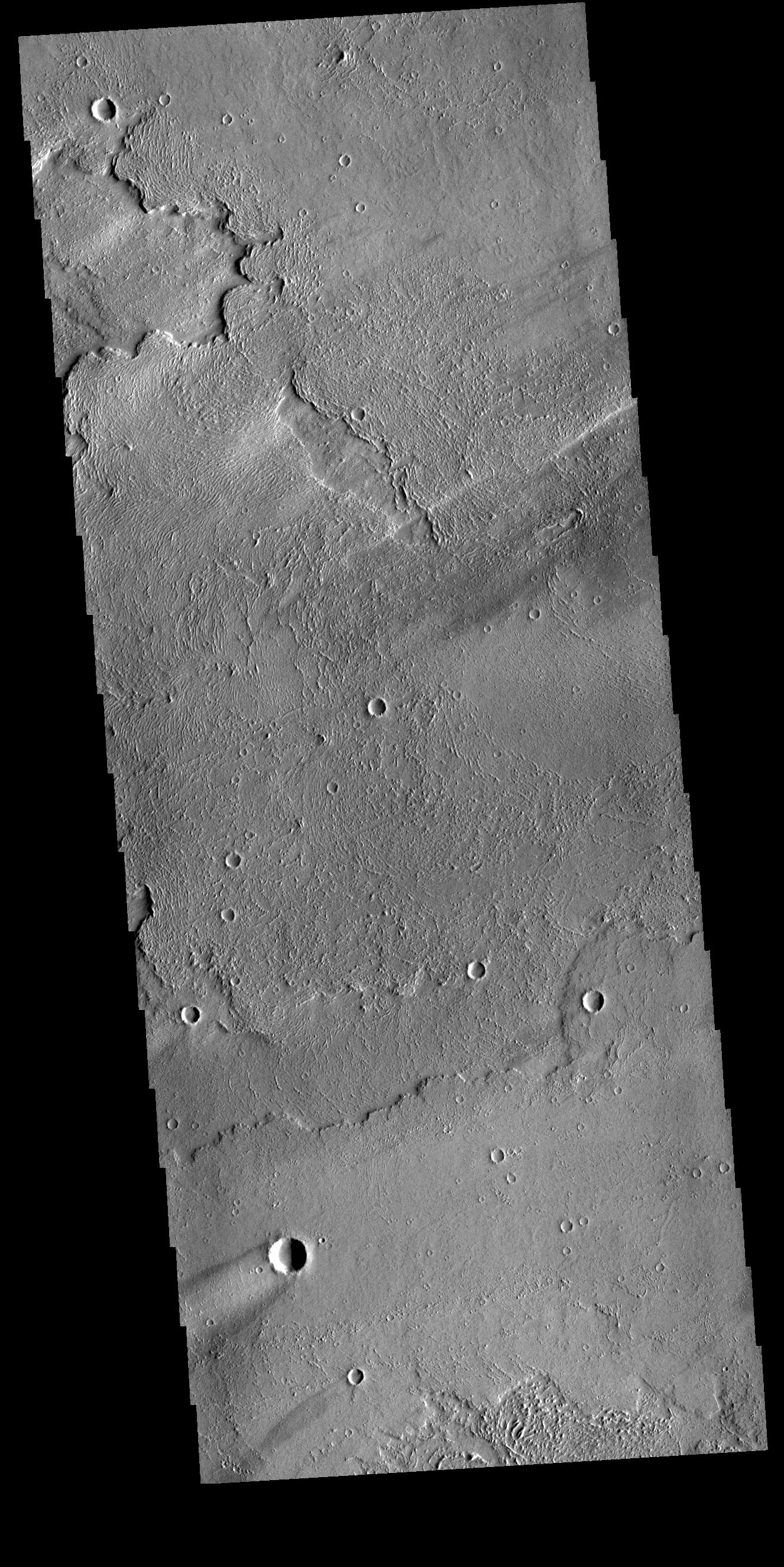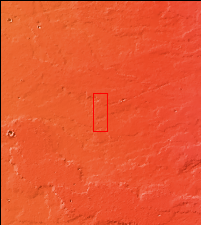
|
Daedalia Planum Windstreak
- Click the image above for a larger view
- Full-Res JPEG (1326 x 2650) (619.6 kB)
- Full-Res TIFF (1326 x 2650) (2.8 MB)
Caption:

Context image
Today's VIS image shows a windstreak on lava plains southwest of Arsia Mons. The extensive lava flow field is called Daedalia Planum. The dark and bright material forming the "tail" behind the crater were created by surface winds funneling over and around the crater. The raised rim and bowl of impact craters causes a complex interaction such that the wind vortex in the lee of the crater can both scour away the surface dust and deposit it back in the center of the lee. The "tail" shows the direction of the wind, in this case blowing from the right to the left.
Orbit Number: 81564 Latitude: -15.0456 Longitude: 226.493 Instrument: VIS Captured: 2020-05-04 07:02
Background Info:
Please see the THEMIS Data Citation Note for details on crediting THEMIS images.
NASA's Jet Propulsion Laboratory manages the 2001 Mars Odyssey mission for NASA's Science Mission Directorate, Washington, D.C. The Thermal Emission Imaging System (THEMIS) was developed by Arizona State University, Tempe, in collaboration with Raytheon Santa Barbara Remote Sensing. The THEMIS investigation is led by Dr. Philip Christensen at Arizona State University. Lockheed Martin Astronautics, Denver, is the prime contractor for the Odyssey project, and developed and built the orbiter. Mission operations are conducted jointly from Lockheed Martin and from JPL, a division of the California Institute of Technology in Pasadena.
Cataloging Keywords:
| Name | Value | Additional Values |
|---|---|---|
| Target | Mars | |
| System | ||
| Target Type | Planet | |
| Mission | 2001 Mars Odyssey | |
| Instrument Host | Mars Odyssey | |
| Host Type | Orbiter | |
| Instrument | Thermal Emission Imaging System (THEMIS) | |
| Detector | ||
| Extra Keywords | Crater, Dust, Grayscale, Impact, Mountain, Thermal | |
| Acquisition Date | ||
| Release Date | 2020-07-07 | |
| Date in Caption | 2020-05-04 | |
| Image Credit | NASA/JPL-Caltech/ASU | |
| Source | photojournal.jpl.nasa.gov/catalog/PIA23997 | |
| Identifier | PIA23997 | |
